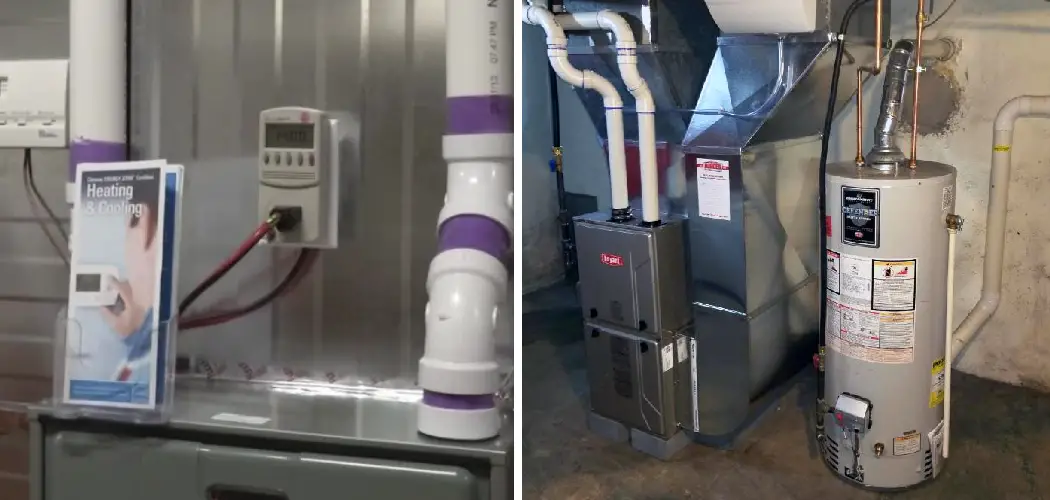Are you dreading the cold winter months and the potential breakdown of your furnace?
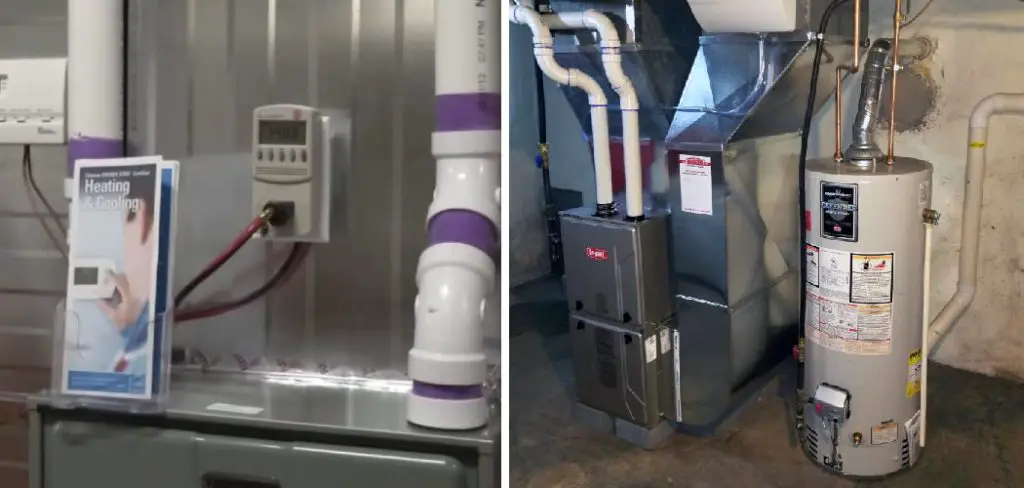
As the leaves start to change color and the days grow shorter, it’s a clear sign that winter is on its way. With the colder months fast approaching, one of the most critical tasks for homeowners is to ensure their furnace is up to the challenge of keeping their home cozy and warm. Preparing your furnace for winter is not just about comfort but also efficiency and safety.
A well-maintained furnace operates more efficiently, saving you money on heating costs and reducing the risk of emergency breakdowns during the year’s coldest days. In this guide on how to prepare furnace for winter, we’ll walk you through the essential steps to prepare your furnace for winter, ensuring it runs smoothly and keeps you comfortable all season long.
What Will You Need?
Before you start preparing your furnace for winter, make sure you have the following tools and supplies on hand:
- A vacuum cleaner with attachments
- Replacement air filter
- Soft brush or cloth
- Screwdriver
- Carbon monoxide detector
- Flashlight
Now that you have all the necessary tools and supplies, let’s dive into the steps to prepare your furnace for winter.
10 Easy Steps on How to Prepare Furnace for Winter
Step 1. Turn Off the Power and Gas Supply:
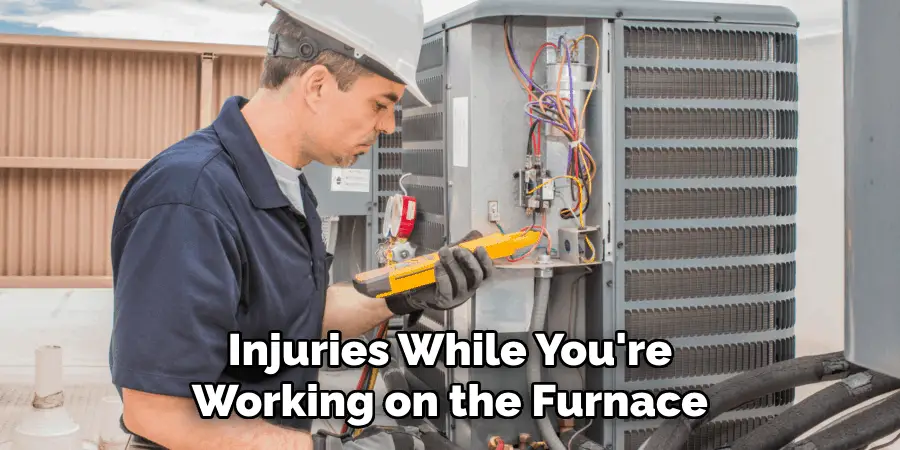
Safety should be your top priority when performing any maintenance tasks. Before you start, locate the power switch (usually found on or near the furnace) and the gas valve, and turn them both off. This will prevent any accidents or injuries while you’re working on the furnace.
Step 2. Inspect and Replace the Air Filter:
A clean air filter is crucial for maintaining the efficiency of your furnace. Begin by locating the air filter slot, which is usually situated near the intake/outtake blower. Carefully remove the old filter and check for dirt, dust, or damage.
Replace it with a new one if it appears worn out or clogged. Doing this not only enhances air quality but also prevents your furnace from overworking, which can lead to costly repairs down the line. Remember to regularly check and replace your air filter, ideally every three months.
Step 3. Clean the Interior Components:
After turning off the power and gas supply, use your vacuum cleaner with attachments to remove any dust, dirt, or debris from inside the furnace. Pay special attention to the blower, belts, and pulleys.
Use a soft brush or cloth to gently clean the fan blades and any other delicate parts. This step ensures that your furnace operates at its optimal efficiency by preventing dust build-up that can impede airflow and decrease heating performance. Regular cleaning of these components can significantly contribute to the longevity and efficiency of your furnace.
Step 4. Check and Clean the Flame Sensor or Pilot Light:

A dirty flame sensor or a malfunctioning pilot light can cause your furnace to operate inefficiently or not at all. To clean the flame sensor, gently remove it using a screwdriver and wipe it down with a soft, clean cloth. Be careful not to damage the sensor, as it is a delicate component.
If your furnace has a pilot light, check to ensure it’s burning blue. A yellow or inconsistent flame might indicate a problem that requires professional attention. Cleaning the flame sensor or checking the pilot light can help ensure your furnace ignites efficiently, keeping your home warm and safe throughout the winter.
Step 5. Inspect and Clean the Heat Exchanger:
The heat exchanger plays a crucial role in your furnace, as it is responsible for transferring heat from the combustion process to the air blown through your ductwork. To inspect it, use a flashlight to look for any signs of crack or damage, as these can lead to dangerous carbon monoxide leaks.
If you’re not comfortable inspecting the heat exchanger yourself or if you notice any damage, it’s essential to call in a professional HVAC technician. Regular inspection and cleaning of the heat exchanger can prevent potential health risks and ensure your furnace is operating safely and efficiently.
Step 6. Lubricate the Blower Motor:
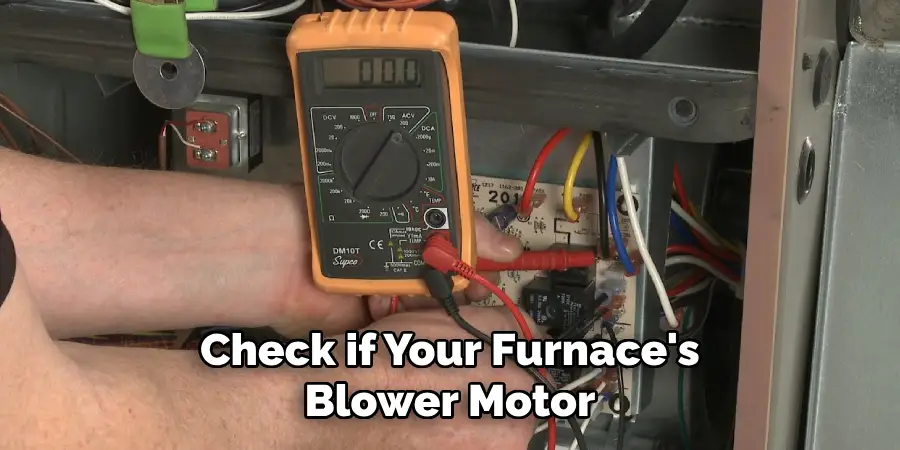
Check if your furnace’s blower motor requires lubrication. Not all motors need this, as some are sealed; however, if yours does, it’s important to apply a few drops of oil to each of its lubrication ports. This task prevents the motor from overheating and failing by ensuring it runs smoothly.
Always use the type of oil recommended by the manufacturer and avoid over-lubricating to prevent attracting dust and debris, which can cause further issues. Lubricating the blower motor is a simple step that can significantly extend the life of your furnace, keeping your home warm and comfortable during the chilly winter months.
Step 7. Check and Test Safeties and Controls:
Testing the safety controls and switches in your furnace is a critical step to ensure it operates safely throughout the winter. After all the preparations, it is time to turn the power and gas supply back on. Then, start your furnace and closely monitor the startup cycle.
Pay attention to the furnace’s response to various controls and safety features, like the limit switch that prevents overheating. If your furnace fails to start or you notice any irregularities, it’s crucial to turn it off and consult a professional. This step helps ensure that all components are in working order and capable of keeping your home safe and warm.
Step 8. Seal Leaks in Ductwork:
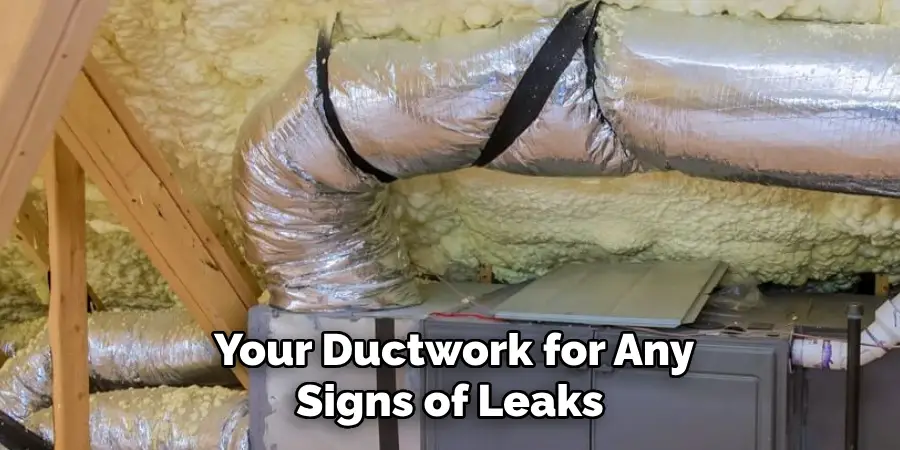
Inspect your ductwork for any signs of leaks or damage that can result in energy loss and reduced heating system efficiency. Use a flashlight to carefully examine accessible ducts for any holes, cracks, or separations at joints. Apply duct sealant or metal-backed tape for small leaks to seal them properly.
If you encounter larger gaps or significant damage, it may be necessary to contact a professional for repairs. Sealing leaks in your ductwork is an effective way to enhance your furnace’s performance, ensuring that warmth is evenly distributed throughout your home while also saving on energy costs.
Step 9. Check and Adjust the Thermostat:
It’s important to ensure that your thermostat is calibrated and functioning properly to maintain optimal comfort levels and energy efficiency during winter. Start by checking the thermostat’s batteries and replace them if necessary. Next, verify that the thermostat settings are appropriate for the season. For instance, setting it to “heat” mode and choosing a comfortable yet energy-efficient temperature.
Additionally, consider installing a programmable thermostat if you still need to do so. They allow you to set temperature schedules that match your lifestyle, automatically reducing heating when you’re asleep or away from home, which can significantly save energy bills. Testing and adjusting your thermostat is a simple but essential step in preparing your furnace for winter.
Step 10. Schedule Professional Maintenance:
Even with diligent self-maintenance, it’s advisable to have your furnace inspected by a professional HVAC technician at least once a year. A professional can perform a comprehensive check that goes beyond basic homeowner maintenance, including inspecting the furnace’s internal parts, ensuring all electrical connections are tight and in good condition, and testing the furnace’s efficiency and safety controls.
This annual check-up can catch issues that are not visible or apparent to the untrained eye, preventing future breakdowns, extending the lifespan of your furnace, and ensuring it runs efficiently throughout the colder months. Scheduling this professional maintenance before the onset of winter can provide peace of mind, knowing your heating system is in top-notch condition.
By following these ten steps, you can effectively prepare your furnace for the winter season.
5 Additional Tips and Tricks
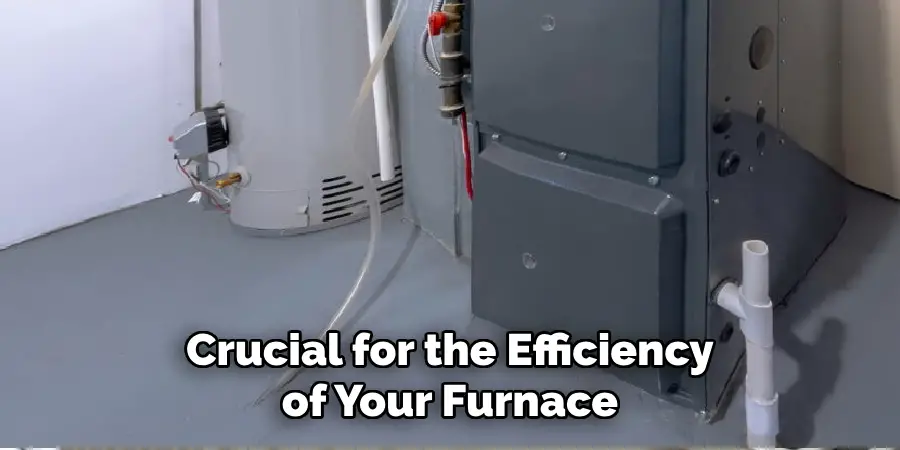
- Inspect and Replace the Filter Regularly: A clean filter is crucial for the efficiency of your furnace. Before winter arrives, check your filter and replace it if necessary. Throughout the winter, make it a habit to inspect it monthly.
- Seal Leaks in Ductwork: Leaky ducts can significantly reduce your heating system’s efficiency by allowing warm air to escape into unheated areas of your home. Use mastic sealant or aluminum foil tape to seal any leaks or holes in the ductwork.
- Keep the Area Around the Furnace Clear: Ensure that the area around your furnace is clear of any storage items, debris, or flammable materials. This improves safety and ensures adequate air circulation, which is essential for your furnace to operate efficiently.
- Test Your Thermostat: Before the cold weather hits, test your thermostat to ensure it works properly. If it’s programmable, consider setting it to lower the temperature while you’re away or asleep to save on heating costs.
- Schedule Professional Maintenance: There’s no substitute for a professional inspection and tune-up of your furnace. Doing so before winter ensures that any potential issues are addressed, keeping your system running smoothly and efficiently throughout the season.
With these additional tips and tricks, you can ensure that your furnace runs efficiently and effectively all winter.
5 Things You Should Avoid
- Neglecting Regular Maintenance: Skipping annual furnace inspections and maintenance can lead to unexpected breakdowns and inefficient operation. Ensure your furnace is inspected by a professional every year before the cold season begins.
- Ignoring the Thermostat Settings: Avoid setting your thermostat at a constant high temperature in an attempt to heat your home faster. This doesn’t work and only leads to excessive energy consumption. Instead, use a programmable thermostat to adjust the temperature according to your schedule.
- Blocking Air Vents: Keep furniture, curtains, and rugs away from air vents. Blocking vents restricts airflow, causing your furnace to work harder than necessary, which can decrease its efficiency and lifespan.
- Forgetting to Check the Chimney: If your furnace vents through a chimney, failing to inspect and clean it can be dangerous. Blocked or dirty chimneys can lead to carbon monoxide buildup inside your home.
- DIY Repairs Beyond Your Skill Level: While it can be tempting to try and fix problems with your furnace on your own, complicated repairs should always be left to professionals. Incorrect repairs can cause serious damage to your furnace or lead to hazardous conditions in your home.
By avoiding these common mistakes, you can ensure that your furnace is operating safely and efficiently during the winter months.
What Happens If Your Furnace Breaks Down?
If your furnace breaks down during the winter, it can be a major inconvenience and potentially dangerous if temperatures drop too low. In addition, emergency repair costs can be significantly higher compared to regular maintenance. To avoid potential breakdowns, make sure to schedule regular professional maintenance and address any issues promptly.
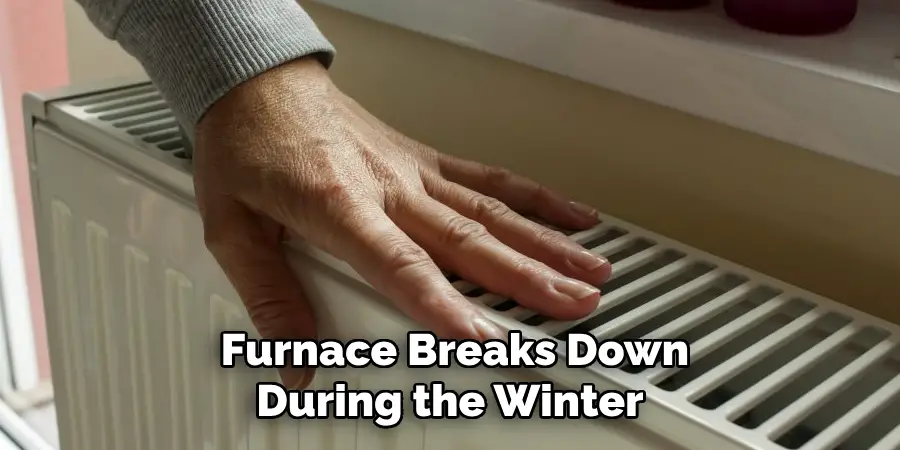
In case of a breakdown, here are some steps to take:
- Stay Calm: Panicking will not solve the problem. Take a deep breath and try to assess the situation calmly.
- Check for Simple Issues: Sometimes, the issue can be as simple as a tripped circuit breaker or a blown fuse. Check these before calling for professional help.
- Call a Professional: If you are unable to identify or fix the issue, it is best to call a licensed HVAC technician to inspect and repair your furnace.
- Find Alternative Heating Options: If the breakdown occurs during extreme weather conditions, consider finding alternative heating options such as space heaters or staying at a friend or family member’s home until your furnace is repaired.
- Take Preventative Measures: After your furnace is repaired, make sure to take preventative measures such as scheduling regular maintenance and addressing any issues promptly. This will help avoid future breakdowns and keep your furnace running efficiently.
By being proactive and taking necessary precautions, you can minimize the chances of a furnace breakdown, keeping your home warm and comfortable during the winter season.
How Does a Furnace Work in the Winter?
A furnace works by converting a fuel source, such as natural gas or propane, into heat that is then circulated throughout your home. During the winter months, the furnace is responsible for heating the air and maintaining a comfortable temperature inside your house.
Here’s how it works:
- A Thermostat Detects a Drop in Temperature: As the temperature inside your home drops below the set temperature on your thermostat, it sends a signal to the furnace.
- Burners Ignite and Produce Heat: Once the furnace receives the signal from the thermostat, its burners ignite and start producing heat by burning fuel.
- A Heat Exchanger Transfers Heat: The produced heat is then transferred to the furnace’s heat exchanger, which heats up air passing through it.
- Air is Blown Into the Ductwork: The heated air then travels through the furnace’s ductwork and is blown into your home’s living spaces through vents or registers.
- Exhaust Gases Are Vented Outside: As the heat exchanger heats up, exhaust gases are produced and safely vented outside of your home.
- The Thermostat Senses Temperature Increase: As the heated air circulates through your home, it warms up the space and raises the temperature to match the set temperature on your thermostat.
- Furnace Shuts Off When the Desired Temperature is Reached: Once the desired temperature is reached, the furnace will shut off until the thermostat detects another drop in temperature.
Understanding how your furnace works can help you troubleshoot any potential issues and appreciate the importance of proper maintenance to ensure its efficient operation during the winter season.
Can Furnace Freeze in Winter?
Yes, it is possible for a furnace to freeze during the winter if proper precautions are not taken. This usually occurs in areas with extremely low temperatures or when a furnace is not running for an extended period.
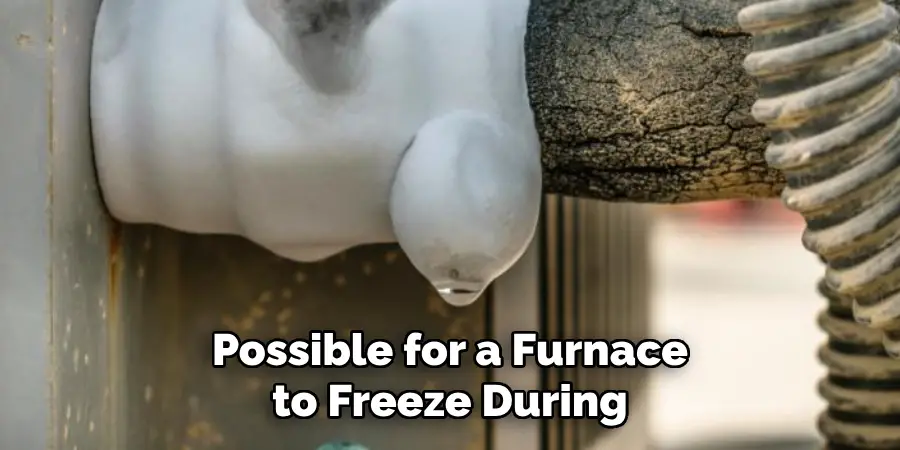
Here are some steps you can take to prevent your furnace from freezing:
- Keep Your Home Warm: Ensure to maintain a consistent and appropriate temperature inside your home, even when you are away. This will prevent the furnace from shutting off completely and potentially freezing.
- Insulate Your Home: Proper insulation will help regulate the temperature inside your home and reduce the workload on your furnace. Make sure to insulate areas such as attics, basements, and crawl spaces.
- Have Regular Maintenance: Schedule regular professional maintenance for your furnace to ensure it is working properly and catch any potential issues before they become bigger problems.
- Install a Freeze Sensor: Consider installing a freeze sensor that will automatically shut off your furnace if the temperature inside drops too low. This can prevent freezing and potential damage to your furnace.
By taking these measures, you can protect your furnace from freezing during the winter and avoid expensive repairs or replacements.
Conclusion
How to prepare furnace for winter is essential for ensuring a warm, comfortable, and safe home during the colder months. By adhering to a comprehensive maintenance schedule, including professional inspections and addressing issues promptly, homeowners can significantly reduce the likelihood of breakdowns.
Key steps such as protecting the furnace from freezing, ensuring your home is well-insulated, and keeping interior temperatures consistent, play crucial roles in furnace preservation.
Installing a freeze sensor offers an additional layer of protection, safeguarding against extreme cold conditions. By incorporating these preventive measures, you can enjoy a hassle-free winter, confident that your furnace will operate efficiently and reliably.
Remember, a little preparation goes a long way in avoiding emergency repairs and ensuring your home remains a cozy refuge against the winter chill.

